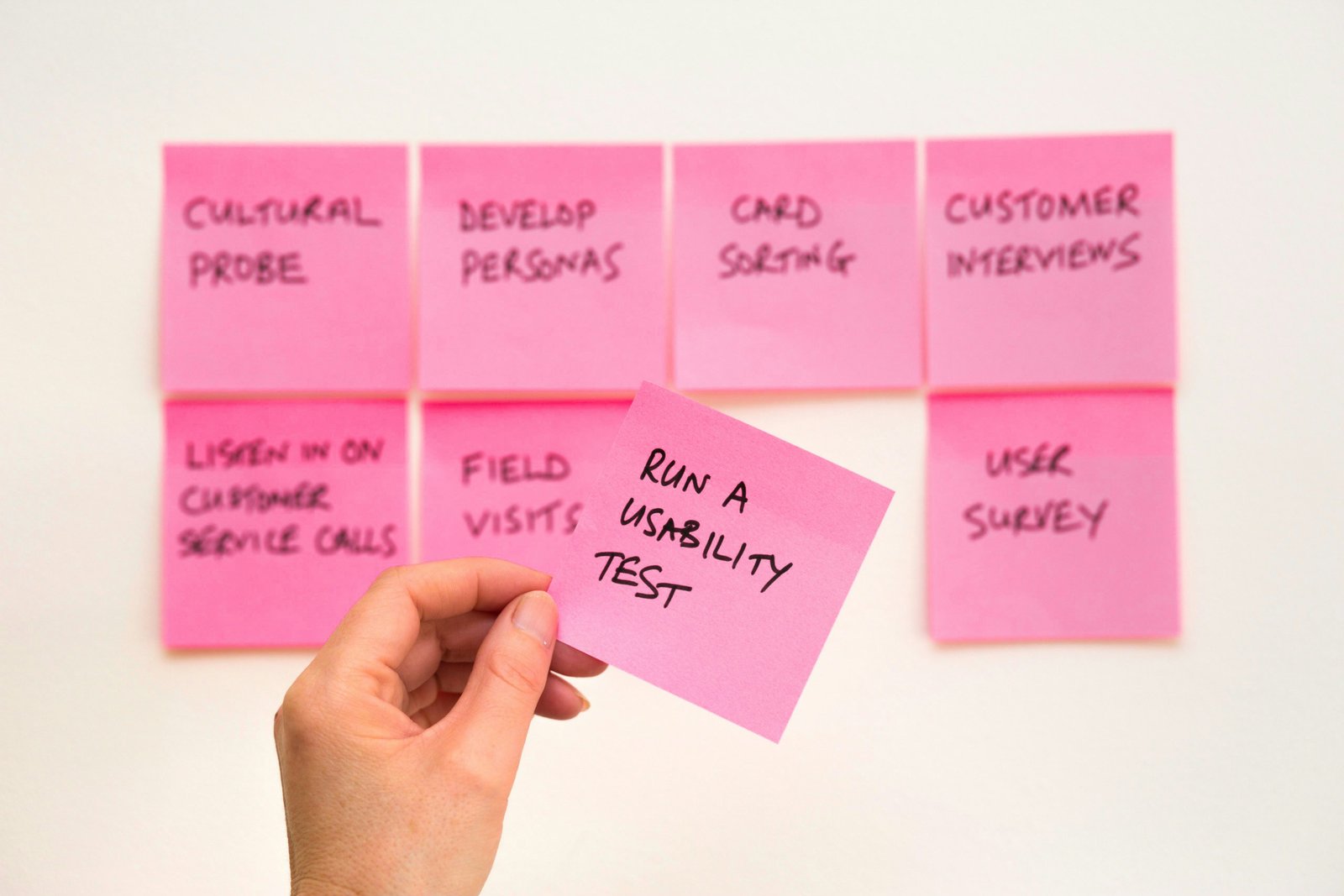Mastering SaaS Customer Onboarding: A Comprehensive Guide
Introduction to SaaS Customer Onboarding
Customer onboarding in the context of Software as a Service (SaaS) refers to the process that guides new users through the initial stages of adopting a software solution. This phase is pivotal as it establishes the foundation for a customer’s interaction with the product, shaping their overall experience and long-term satisfaction. The effectiveness of onboarding plays a significant role in user retention; a well-executed onboarding process can significantly enhance a user’s understanding and appreciation of the service, making them more likely to remain engaged over time.
The primary objectives of SaaS customer onboarding include increasing user satisfaction, reducing the time required for users to realize value from the product, and ensuring customer success. By focusing on these objectives, businesses can streamline the onboarding experience, enabling users to quickly familiarize themselves with key features and functionalities. This is essential because delays in achieving initial success can lead to frustration, which can result in higher churn rates. Therefore, prompt and effective onboarding is critical for cultivating positive user experiences right from the start.
Additionally, effective onboarding is linked directly to the development of long-term customer relationships. When users feel supported and understand how to leverage the software for their needs, they are more likely to use it consistently and recommend it to others. In this way, SaaS companies can foster a loyal customer base, which is paramount for sustained business growth. Thus, the importance of a robust onboarding strategy cannot be overstated; it is not merely a procedural step but a vital component of a successful customer lifecycle. Implementing best practices in onboarding is a strategic approach that benefits both the provider and the customer.
Understanding the Onboarding Process
The customer onboarding process is a critical phase in the Software as a Service (SaaS) journey, pivotal for ensuring a smooth transition from initial sign-up to complete product adoption. This process typically comprises several stages, each designed to enhance user experience and facilitate successful integration of the SaaS solution into the customer’s workflow. Understanding these stages allows service providers to create a structured onboarding experience that meets user needs effectively.
The first stage is preparation, where companies establish the necessary frameworks and resources for onboarding new clients. This phase may include setting up user accounts, configuring settings, and developing foundational materials such as tutorials or user guides. By providing a solid base, SaaS companies can significantly reduce friction at later stages, thereby offering an easier pathway for users to engage with the product.
Following preparation is the engagement phase, which serves to actively involve customers with the software. This phase often includes personalized training sessions, guided walkthroughs, or interactive onboarding tours that help users navigate the platform’s features. Effective engagement not only boosts users’ confidence but also promotes familiarity with the various functionalities of the software, which can lead to higher satisfaction and retention rates.
The final stage of the onboarding process is evaluation, where feedback is gathered to assess the user experience. This phase is crucial for understanding how well the onboarding has been executed and identifying areas for improvement. Metrics such as user adoption rates, feature usage, and customer satisfaction scores serve as key indicators. By paying attention to this evaluative stage, SaaS providers can continuously refine their onboarding strategies to better accommodate user needs, ultimately driving more successful long-term adoption of the product.
Creating an Effective Onboarding Strategy
Developing an effective onboarding strategy is crucial for ensuring that customers derive maximum value from your Software as a Service (SaaS) product. A well-structured onboarding process not only aligns with business goals but also meets user expectations, thereby fostering customer retention and satisfaction. The first step is to define target customer personas. Understanding your customers’ needs, preferences, and pain points allows you to tailor the onboarding experience specifically for them. This customized approach ensures that customers feel valued and understood right from the outset.
Once you have identified your target personas, it is essential to establish measurable onboarding goals. These goals should be specific, achievable, and reflective of both the company’s objectives and customer needs. For instance, an effective onboarding goal might be to have 90% of new users complete their first key action within a week of signing up for the service. These goals should serve as reference points to gauge the success of the onboarding process.
To further assess the effectiveness of your onboarding strategy, determining key performance indicators (KPIs) is imperative. KPIs might include metrics such as user activation rates, time to first significant usage, or customer satisfaction scores post-onboarding. Monitoring these performance indicators helps identify areas of strength and opportunities for improvement, ensuring the onboarding experience evolves in response to customer feedback.
Incorporating feedback loops is another fundamental aspect of a successful onboarding strategy. Gathering insights from new users about their onboarding experience provides valuable information that can lead to meaningful enhancements. This continuous improvement cycle will not only refine the onboarding process but also foster a culture of responsiveness within your organization, ultimately leading to enhanced customer loyalty and long-term success.
Key Best Practices for SaaS Customer Onboarding
Effective customer onboarding is pivotal in the Software as a Service (SaaS) industry, as it sets the stage for user success and retention. One of the foundational best practices is to provide personalized welcome messages. Tailoring your communication based on user profiles can significantly enhance their initial experience. For instance, addressing users by name and acknowledging their specific use case fosters a connection and demonstrates that you value them as individuals. Such personalized interactions can lead to increased user engagement and satisfaction right from the start.
Moreover, incorporating comprehensive walkthroughs and tutorials is crucial in simplifying the onboarding process. Interactive guides that showcase essential features and functionalities not only help users to navigate your platform effectively, but they also empower users to use the service confidently. These resources can be in the form of videos, tooltips, or step-by-step walkthroughs, designed to address common user queries and potential pain points. Providing these insights can dramatically reduce the learning curve associated with your SaaS product.
Utilizing checklists is another effective strategy to guide users through the onboarding journey. A checklist serves as a visual representation of the onboarding process, ensuring that users do not overlook critical steps. By breaking down the onboarding tasks into manageable actions, users can easily track their progress. This method can enhance accountability and encourage users to complete the onboarding process without feeling overwhelmed.
Lastly, maintaining open lines of communication is essential in nurturing user relationships throughout this onboarding phase. Regular check-ins, surveys, and feedback mechanisms can help identify areas for improvement and foster a sense of community among users. By being approachable and responsive, you enhance the overall onboarding experience, promoting a thriving association between your SaaS product and its users.
Leveraging Technology for Onboarding
In the rapidly evolving landscape of Software as a Service (SaaS), the onboarding process plays a crucial role in determining user retention and overall satisfaction. Leveraging technology effectively can significantly enhance this transition phase for new users. Several tools and platforms allow businesses to streamline the onboarding experience, ensuring that users can quickly become proficient with the software.
One of the most impactful technologies in enhancing onboarding is automation. Automation tools can handle repetitive tasks, such as sending welcome emails, scheduling training sessions, and providing initial guidance tailored to user needs. By automating these elements, companies can free up human resources for more personalized interactions, ultimately leading to improved customer experiences. This efficiency not only accelerates the onboarding timeline but also ensures that users receive consistent messaging.
In-app messaging also proves essential in guiding users through the onboarding process. This real-time communication tool enables service providers to deliver contextual help, tutorials, and tips directly within the application. By embedding these supportive messages at critical points, users are more likely to engage with the features that are most pertinent to their needs. This approach helps educate users on functionality while keeping them focused and engaged.
Furthermore, analytics software offers valuable insights into user behavior during onboarding. By tracking user interactions, companies can identify points of friction or confusion, allowing them to refine the onboarding process. Understanding how users navigate through the application helps in making data-driven decisions, optimizing the user experience, and reducing churn rates.
By harnessing these technologies, SaaS companies can create a more efficient and user-friendly onboarding environment. As a result, the onboarding phase can transition from being a mere formality to a strategic component that drives long-term customer satisfaction and loyalty.
Measuring Onboarding Success
Measuring the effectiveness of SaaS customer onboarding is crucial for ensuring that new users are successfully integrated into the platform. Employing the right metrics can provide valuable insights into the onboarding process, guiding companies toward an optimized user experience. Three key metrics to focus on are user activation rates, retention rates, and customer feedback scores.
User activation rates offer a clear picture of how many users are engaging with the product after the onboarding process. This metric can be determined by tracking user interactions with key features within a specific time frame, often the first week or month post-sign-up. A higher activation rate indicates that users are finding value in the product, which is essential for successful onboarding.
Retention rates are another vital indicator of onboarding success. These rates measure how many users continue using the product over time. High retention rates usually signal effective onboarding, as they suggest users not only understand how to use the product but also see its long-term benefits. It is important to analyze retention data over various periods, such as 30, 60, or 90 days, to identify trends or potential drop-off points that may need addressing.
Customer feedback scores, acquired through surveys or net promoter scores (NPS), are essential for assessing users’ sentiments regarding the onboarding experience. This qualitative data can illuminate user pain points, reveal areas for improvement, and inform adjustments to the onboarding process. Analyzing feedback can help organizations tailor their approach, ensuring that new customers receive a personalized and effective onboarding experience.
Ultimately, by focusing on these metrics—user activation rates, retention rates, and customer feedback scores—companies can continuously refine their onboarding processes based on data-driven insights. A structured approach to measuring onboarding success can lead to enhanced user satisfaction and long-term loyalty.
Common Challenges in SaaS Customer Onboarding
The SaaS customer onboarding process is crucial to ensuring new users effectively utilize the software. However, it is not without its challenges. One common obstacle that users encounter is information overload, where an overwhelming amount of information is presented at once, which can lead to confusion and frustration. The challenge often lies in effectively breaking down the content and presenting it in digestible segments, allowing new customers to absorb and understand the necessary information without feeling overwhelmed.
Another significant challenge during onboarding is the lack of engagement from new users. When customers do not find the onboarding process interactive or tailored to their needs, they may disengage or even abandon the process altogether. To combat this, it is essential for SaaS providers to create an engaging and personalized onboarding experience. This can be achieved through interactive tutorials, one-on-one onboarding sessions, or community forums that encourage user participation and engagement.
Technical difficulties can also impede the onboarding experience. For example, new users may encounter issues with software installations, integrations, or navigating the platform itself. These challenges can undermine user confidence and lead to a poor first impression. Efficient solutions could involve providing step-by-step guides, dedicated support teams, or live chat features to assist users in real time.
Successful SaaS companies have navigated these onboarding challenges by implementing strategies such as user feedback loops, iterative onboarding processes, and targeted educational content. For instance, a company may utilize feedback from early users to refine their onboarding materials or develop new tutorials that directly address common pain points. Adapting reactions to common challenges not only improves the onboarding experience but also fosters long-term customer loyalty.
Case Studies of Successful Onboarding Programs
Examining successful customer onboarding programs within the Software as a Service (SaaS) sector can yield valuable insights for organizations seeking to improve their onboarding processes. One notable case study is that of Slack, a collaboration platform that emphasizes user engagement from the outset. Slack implemented a proactive onboarding strategy that includes personalized walkthroughs emphasizing key features. The challenges faced during initial implementation revolved around user retention, which was addressed through continuous feedback loops and iterative improvements. The outcomes were significant, with increased user retention rates and heightened engagement within the first month of use.
Another exemplary example is HubSpot, a leader in inbound marketing and sales. HubSpot’s onboarding program features an extensive array of resources, including interactive tutorials, webinars, and one-on-one consultations. The initial challenge involved scaling onboarding resources as the customer base grew. HubSpot responded by leveraging automation tools to personalize the onboarding experience effectively. As a result, new users reported higher satisfaction levels and quicker adaptation to the platform, leading to a marked increase in subscription renewals.
Similarly, Intercom showcases a distinct onboarding strategy focusing on contextual assistance. When users first log in, they are greeted with an intuitive guide that highlights their most relevant features based on usage patterns. The challenge faced here was ensuring that the guide remained unobtrusive while still providing useful, real-time advice. Intercom tackled this by integrating user feedback into the experience design, resulting in improved customer satisfaction and engagement metrics.
These case studies illustrate various strategies and methodologies that SaaS companies have successfully employed in their onboarding programs. By analyzing these real-world applications, organizations can garner ideas and inspirations to enhance their own onboarding initiatives, ultimately driving user adoption and satisfaction.
Future Trends in SaaS Customer Onboarding
As the Software as a Service (SaaS) industry continues to evolve, so do the methods and strategies employed for customer onboarding. Emerging trends indicate a significant shift towards enhancing user experiences through advanced technologies and personalized approaches. One prominent trend is the increasing use of artificial intelligence (AI) in the onboarding process. AI-powered tools enable SaaS platforms to offer tailored onboarding experiences, facilitating a smoother transition for users. This technology can analyze customer behavior in real-time, predicting user needs and providing relevant resources accordingly. By leveraging AI, companies are achieving higher engagement rates, ensuring new users feel supported from the outset.
Another significant trend is the movement towards personalized onboarding experiences. Unlike traditional, one-size-fits-all methods, personalized onboarding tailors the journey according to individual user preferences and requirements. This can include tailored tutorials, targeted resources, and specific feature introductions catering to the user’s industry or role. Such customization greatly improves user satisfaction and retention, fostering a stronger connection between the customer and the product from the very beginning.
Additionally, the rise of community-driven support networks is shaping the future of SaaS customer onboarding. These networks create a sense of belonging and provide users with the opportunity to share experiences, solutions, and best practices. Community platforms enable customers to connect with peers and experts, enhancing knowledge sharing and user engagement. As onboarding evolves, harnessing the power of community support can significantly enrich the onboarding experience, leading to quicker problem resolution and a more collaborative environment. The integration of these trends signifies a transformative direction for customer onboarding in SaaS, aimed at optimizing user experience and ensuring long-term success.







